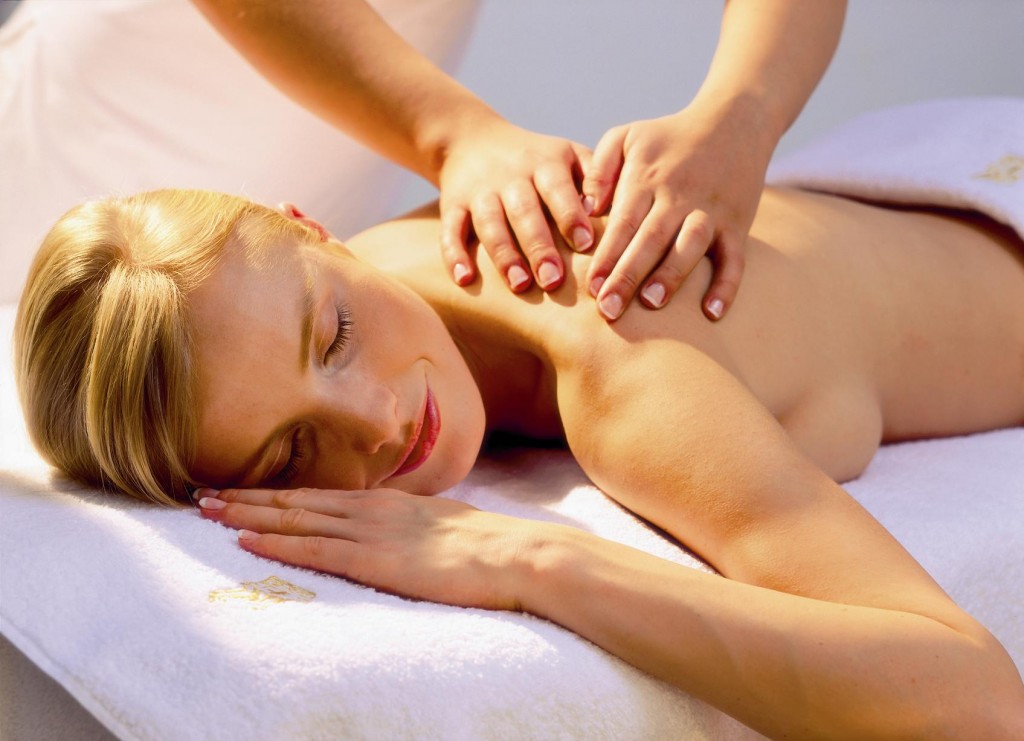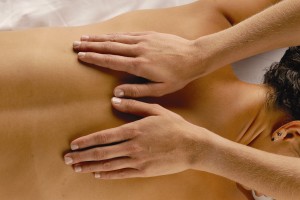But ultimately the point and the purpose of providing a massage can boil down to one singular outcome – That is to neutralize or reduce “stress” levels. This is true whether we are talking about physical, muscular, mental or even emotional stress. Yes, getting a massage is so powerful and so effective that it can help with all of the aforementioned symptoms.
The information provided below isn’t exhaustive, but should provide a good overview of what massage is, the modalities, applications, benefits, as well as side effects.

There is a vast system of vessels running through your body, roughly parallel to your circulatory system, and this system is filled with a fluid that is responsible for carrying away and eliminating many of the organisms, bacteria, viruses, and other microscopic germs that might otherwise attack you… This is the lymph system.
Your lymph system has nodes at various strategically located areas through-out your body, and these nodes have the job of capturing the invaders and processing them before eventual expulsion through your excretory system.
Below are the 3 most effective ways for the body to circulate lymphatic fluid through our body.
By facilitating your body to efficiently circulate the lymph fluid, massage therapy aids the body flush out toxins.
Therapists are taught in school to always massage in the direction of circulation… Towards the heart, whenever they’re applying enough pressure to move the blood underneath the skin. The reason for this is that your veins have little one-way valves in them that keep blood from going back in the wrong direction. So obviously it’s not a good idea to push the blood back against these valves, potentially harming them. In fact, when these valves don’t work properly on their own, the blood seeps backward and pools up, causing the appearance of varicose veins.
in massage therapy, the movements physically push the blood around within the vessels thereby improving circulation. It also draws more blood to the surface of the body and into areas of relatively poorer circulation, thus bringing with it much-needed oxygen and other nutrients for the tissues.
By helping to bring nutrient-rich blood into areas that are recovering from any type of problem, and by helping to cleanse these same areas of toxins (stimulating the lymph system), massage therapy promotes quicker healing.
Also, certain types of massage stretch and soften tissues in traumatized areas, helping them regain natural elasticity and strength faster.
The skin is where massage therapy has its most pronounced effects, massage includes several actions that leave the skin silky, vibrant, and fully functioning in both directions. By that I mean it promotes the shedding of dead cells while also encouraging the absorption of moisture, nutrients, vitamins, and other vital elements, especially when the massage is given with the aid of creams, oils, and lotions created for just that purpose.
In this sense, massage therapy helps the skin “breathe.” Just as our lungs breathe both in and out, inhaling and exhaling, healthy skin must breathe in both directions, too, and massage can help improve your skins appearance.
Dr. Robert Benson of Harvard wrote in The “Relaxation Response” that by repeating certain breathing and concentration exercises, people could greatly reduce their levels of stress.
Massage therapy, by its very nature, induces a similar response. It’s a mini-vacation that you can take right there inside your own body. While you are saving up for that great vacation abroad. Just close your eyes and let someone else send you to your own virtual haven.
If you receive a massage and don’t relax, it’s the same thing as going to an exotic destination and not enjoying the scenery, the warmth, the water, or the beautiful scenery. In other words, it’s up to you. Nobody can force you to relax while receiving a massage, you must allow yourself to let go.
Offers emotional reassurance
Massage therapy, by offering a sustained, intentional, caring form of tactile stimulation is one of the best ways to impart emotional reassurance, and emotional reassurance just may be the number one need of humans in the twenty-first century.
The combination of all the preceding benefits leaves just about anybody who receives a massage looking better than they did before they started. Consequently, massage therapy will improve your appearance when you are feeling;
 For stress relief, when the daily grind is just too much and the simple act of lying down and having someone pay solicitous attention to you for an hour is enough to make a big difference.
For stress relief, when the daily grind is just too much and the simple act of lying down and having someone pay solicitous attention to you for an hour is enough to make a big difference.
Just ask the world-class athletes who travel with their own personal massage therapists! They’ll tell you what a difference a massage can make. Many Olympians and high-level players in all sports are true believers, but they are not the only ones who use massage therapy as part of their training. Amateur athletes, weekend warriors and even white and blue collars alike realize the benefits and incorporate it whenever they can. Sport/Deep Tissue Massage truly gives you the edge and helps you effectively manage stress levels.
Deep-tissue massage (also known as myofascial release) is a type of massage that seeks to release the myofascial restrictions of the deeper muscles, tendons and ligaments of the body. It uses the same principles and strokes of effleurage, friction, petrissage, tapotement, traction, and vibration similar to that of Swedish, with slight variations on the focus and depth. The primary focus of deep tissue massage is to address specific tight muscles and to correct postural distortion caused by these tight muscles. There is a misconception that deep tissue simply means classical massage with heavier pressure. A practitioner may use very deep pressure without really addressing postural problems. Conversely, a practitioner may sometimes use light pressure in a precise manner to facilitate deeper muscle relaxation, with little or no effort. More importantly, the idea of deep tissue is not necessarily focused on pressure but should be focused on realigning the deeper layers of muscles and connective tissues.
The primary stroke of deep tissue massage is linear friction- sustained, slow and deliberate strokes along the muscles fibers to unblock adhesions. Some practitioners use little or no oil for better control in realigning the deeper layers of the connective tissues. This stroke activates the stretch receptors of the muscle, giving it a signal to release. A deep-tissue massage may also use static pressure in one spot to release muscles. Some clients may experience a slight tingling or burning sensation in the skin or describe deep tissue as a balance of pain and pleasure. Others may describe deep tissue as a gentle to deep stretch on the area being treated. When skillfully applied to a group of muscles, deep-tissue massage can “educate” the body to overcome dysfunctional muscle patterns and adopt a more balanced and healthier posture.
Deep-tissue massage also has wonderful health benefits. The release of habitually tight muscles relieves chronic pain and speeds the healing of injuries. Balanced posture improves organ function and athletic performance as well as addressing chronic pain. Relieving the stress and energy drain of chronically tight muscles improves general health as well.
It is important that practitioners be exposed to the range of myofascial techniques in order to effectively tailor their treatment to the needs of each individual client. In general, myofascial release is used to improve the health of the muscles and fascia, improve circulation and restore good posture. Before we learn about myofascial release, it would be helpful to learn what this therapy actually treats. It is critical to understand from the outset that there is a wide variety of techniques employed in deep-tissue myofascial release. Other schools that have origins in realigning deeper layers of muscle and connective tissues include: Rolfing, Structural Integration, Neuro-Muscular Therapy, CranioSacral Therapy, Polarity Therapy, Travell’s Trigger point therapy, Pfrimmer Deep Tissue, Postural Integration, Soma Neuromuscular Integration, Thai Massage, and Trager.
This type of massage helps the body repair itself. Many people have found that it was the key factor in helping them heal quickly and get back to normal activity levels as soon as possible after injuries and surgery.
We all want to look as good as we can, and massage can help. Through a combination of several of the benefits mentioned earlier, massage therapy softens your skin and gives you a healthy glow. It is also used to improve the appearance of certain skin irregularities such as cellulite, with varying degrees of efficacy. People include massage therapy in their beauty regimen for its ability to promote a youthful appearance and as an auxiliary treatment to enhance the effects of other beautifying procedures, such as plastic surgery and facials.
If massage were a map of the world, energy-balancing would be China. Yes, that’s how big it is. Because energy is invisible, it’s easy to dismiss it as unimportant as far as our bodies go. But for a moment, try to imagine your body without energy. Part of receiving an effective massage includes learning how to understand your body’s energy systems, focusing on how to balance and enhance our inner invisible energy. These techniques can basically be categorized as either ancient systems, such as acupressure, or modern systems such as craniosacral therapy.
Most of us inhabit our bodies without giving it much thought. We walk around in them and sit around in them and lie around in them, all on automatic pilot, relying upon the old patterns and habits we picked up in childhood. Sometimes, we’re negatively influenced by injuries and other traumas that turn these unconscious habits into potentially debilitating conditions. We feel “stuck” in certain postures and can’t seem to get back on track. Massage therapy can help you become aware of how you’re holding onto certain patterns of tension and thus help you break them. Additionally, it can also help you gain self-confidence through releasing old, negative body images.
Depending on your frame of mind, any massage therapy session could be a spiritual experience, regardless of whether you receive it in an ancient Asian temple or the treatment room of your local health club. All you need are two people focused on awareness, breathing, releasing, and compassion. This spiritual aspect of massage can be used in the following ways:
Allowing yourself to be touched with caring, therapeutic intentions takes a high degree of maturity. Several types of massage therapy have been developed to access inner psychological issues and bring them to light. This is especially true in specific cases of past emotional trauma involving abuse and negative body-image caused by being overweight or handicapped.
Believe it or not, there are special courses offered to teach people how to massage animals. As anyone who’s ever scratched behind the ear of an appreciative pet can tell you, they love it. Certain animals in particular have been the lucky recipients of massage:
Monday: 7 AM – 8 PM
Tuesday: 7 AM – 8 PM
Wednesday: 7 AM – 8 PM
Thursday: 7 AM – 8 PM
Friday: 7 AM – 8 PM
Saturday: 7 AM – 8 PM
Sunday: 7 AM – 8 PM